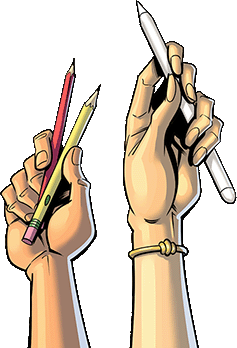Rules To Creating An Amazing Comic Book
November 26, 2020
Holding the comic book or graphic novel that you created, from inception to the finishing touches, doesn’t have to be just a dream. With online printing services, you can turn your ideas into realities with just a click of your mouse.
The genre of graphic novels or comic books has been around for a century or even longer if you consider cave paintings and specific Roman columns early forms of comic books.
If you’ve been a fan of comics since the beginning, whether you prefer DC Comics or Marvel, or have newly discovered this art form, you need to know some tips to pull off a cohesive storyline.
Why Use an Online Printing Service?
When making some decisions about the design of your comic book, you’ll benefit from the expert advice of a professional. You will need to decide on broad issues like paper quality and lettering to smaller problems such as panel borders and speech bubbles through this creative journey.
There are no hard and fast rules for creating a comic book, but there are techniques that can help make your comic more readable and enjoyable. Here are some rules for drawing your story idea to make it coherent and attractive to your audience.
It All Starts with an Idea
Some narratives begin with an idea, others with a character, and still others with a setting or set of circumstances.
Getting an idea for a great comic isn’t easy. Writing, just like any skill, is learned, and to know it well, you have to practice. Graphic novels are a form of visual storytelling and can be as difficult to construct as a nuanced and complex novel. The combination of both graphical images and text make it unlike any other type of tale-telling known to humans.
Many writers rely on freewriting, filling journal pages with nonconsecutive thoughts, descriptions, or ideas. Others use more detailed outlines, which help if you get stuck in the dreaded writers’ block as you can simply check what comes next and start drawing.
Follow your instincts. Coming up with an idea may be the most challenging step if you’re not Joe Hill or Gabriel Rodríguez since it requires a purely creative process. You’re building a world inside your mind, so following a step-by-step plan to draw a comic may help as you bring your ideas to life.
Write a Script
As soon as you have an inkling about what you want to write about, you should write it all down in script form. Make sure you cover the essential aspects, like character development, setting, and back story. This script will serve as your beacon, helping you through the complicated process of making a bunch of words on the page become a work of art.
The more you know about your characters, the better. You don’t need to include all the backstory in the script, but the minuscule details will help you create meaningful dialogue and plot.
Every good story has tension. Readers root for the characters, but something has to happen to them to make the readers care about them. In most storylines, a protagonist has a specific goal, and throughout the whole of the script, they experience obstacles. It’s up to you whether your protagonist fails or succeeds.
Sketch it Out
The next step in your process is to create the preliminary sketches. If you’re not an artist, you’ll want to collaborate with someone experienced. Reach out to artists you admire on social media or DeviantArt.
Regardless of whether you’re working with an outside artist to create the images for your graphic novel or are the artist yourself, this step is messy, imperfect, and crucial to your creative process.
In this step, you’re establishing the pace of the plot as well as the character’s point of view. Sketching out your comic book page lets you see it all together. Feel free to move plot points around at this stage. This part doesn’t need to be perfect since it is only a map of where you’re going.
Plan a Layout
The layout is another draft of your sketches with more detail. In your layout, make sure you establish the perspective of the shot in each panel. Is it a landscape panel or a close-up of the characters’ conversation?
Include the speech bubbles in your layout so you can see if all the elements of each panel will comfortably fit. Each panel should be true to size, so a wide-range shot that takes up the entirety of a page – a splash – or one that takes up two pages – a spread – should be factored into this draft.
Draw the Artwork
You (or someone else) will finalize the sketches you completed in the previous steps. This includes the cover and any large-scale splashes or spreads inside.
Coloring and Inking
Deciding on a color scheme and how you want your book to look will significantly affect the finished product. You should pick colors that complement one another, are realistic, and aren’t too jarring.
Lettering
This is the step in which you add text, including any special sound effect like Pow or Bam! The artist who drew your artwork does not necessarily have to be the same person who does you lettering. The letterer will make important decisions about where to put emphasis with italics and what font to use.

The Final Word
If you have a dream about creating and publishing your graphic novel, it may not be as far-fetched as you think.
Hiring a Comix Well Spring online printing service expert can reassure you with the professional guidance you need to make your dreams a reality.


